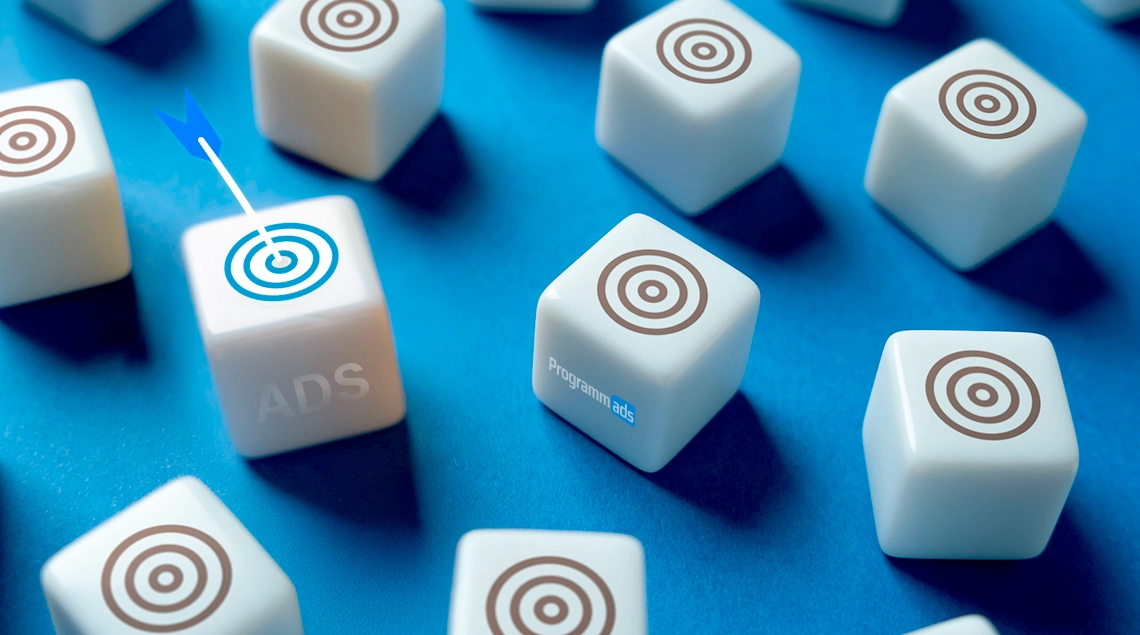
This article is based on insights shared during our recent conference “Programmatic in action: why and how to integrate it into your strategy.” You can watch the full replay (in french) here. Enjoy !
Programmatic advertising is no longer a tool reserved for global networks. In 2025, agencies of all sizes can access premium formats like connected TV, streaming audio, and digital out-of-home thanks to flexible models.
Beyond efficiency, programmatic advertising supports full-funnel strategies, combining brand awareness at the top with conversions at the bottom, and delivers measurable impact across channels. In our conference, we highlighted that :
For agencies, the opportunity is both practical and urgent. The best practices are simple: start small, think full-funnel, use first-party and third-party data wisely, rely on automation for bidding, and measure every campaign.
In short: programmatic advertising is accessible, effective, and essential for every agency.
When people hear “programmatic advertising,” they often think of Google Ads or Meta Ads. But these are self-service platforms, limited to their own walled gardens.
Programmatic advertising is broader. It refers to the automated buying and selling of ad space across the open web and premium environments. Instead of manually negotiating with publishers, advertisers use technology to buy ads in real time (RTB: real-time bidding), reaching the right people with the right message at the right time.
At the heart of this process are demand-side platforms (DSPs). A DSP is a demand-side platform that allows advertisers to:
On the supply side, publishers make their inventory available through supply-side platforms (SSPs) and ad exchanges. Together, DSPs and SSPs create a transparent, data-driven ecosystem where ads appear where audiences are most relevant.
👉 Put simply: programmatic advertising allows agencies to buy ads in places that traditional platforms cannot reach : Netflix, Disney+, Spotify, Deezer, or digital billboards in train stations and shopping malls.
And no, you don’t need to be a data scientist or a multinational agency to use it.
Digital advertising keeps growing, while traditional media stagnates. In France, digital ad spend has increased by more than 80% in the past five years. At the global level, programmatic already dominates display investment and will soon reach 90% of all display advertising spend.
At the same time, Google and Meta are no longer the only gateways to digital visibility. Advertisers want access to the open web, premium publishers, streaming services, and connected environments. If an agency cannot offer these, clients may go elsewhere.
For years, programmatic was seen as expensive and complex. Agencies needed annual DSP contracts, media traders, and campaign budgets of €20,000 or more. That model excluded tier 3 agencies, the ones without in-house trading desks.
Today, three models make programmatic accessible to everyone:
Our role as programmatic traders
One of the biggest strengths of programmatic advertising is its ability to support campaigns across the funnel.
As Florent D’Amato explained during the conference: “a strong upper funnel strengthens the lower funnel.” In other words, investment in awareness directly improves conversion performance.
This approach allows agencies to balance brand-building with performance marketing, ensuring both short-term results and long-term growth.
Video consumption in France is massive and fragmented. People spend 4h23 per day on video, with one-third of that time on streaming platforms. Traditional TV remains relevant for older audiences, but streaming dominates younger demographics.
Programmatic advertising gives agencies access to three main environments:
A campaign for the movie Shazam! illustrates this: by combining YouTube and Twitch through programmatic, the brand achieved +11.5% incremental reach and 3x higher engagement on Twitch compared to YouTube alone.
Audio consumption shows strong generational differences:
Audio is unique because it reaches people while driving, exercising, or working - contexts where visual ads cannot reach them. Programmatic audio allows agencies to combine FM radio with streaming platforms, ensuring mass coverage and precise targeting.
Digital out-of-home (DOOH) is the evolution of billboards. Screens in metros, shopping malls, airports, gyms, and even gas stations can now be activated programmatically.
Advantages include:
Consumer perception confirms its impact:
A Decathlon campaign used hyperlocal DOOH to increase store traffic by 38% : clear proof of how programmatic formats can drive measurable business results.
If your agency is new to programmatic, the key is not to overcomplicate, but rather to :
👉 The goal is not to master every acronym, but to use programmatic advertising to support advertisers’ business objectives.
What is programmatic advertising in simple terms?
It’s the automated buying of ads via DSPs, using data and real-time bidding to place ads across the open web and premium environments.
How much does a programmatic campaign cost?
With dedicated partners, entry-level campaigns can start from €5,000. Direct DSP access usually requires €20,000 or more per campaign.
What formats are available in programmatic?
Video (SVOD, BVOD, AVOD), audio (streaming, podcasts), DOOH (digital billboards), and display ads across premium publishers.
Can small agencies run programmatic campaigns?
Yes. By working with a partner like Programmads, small and mid-sized agencies can offer programmatic advertising without heavy budgets or in-house traders.